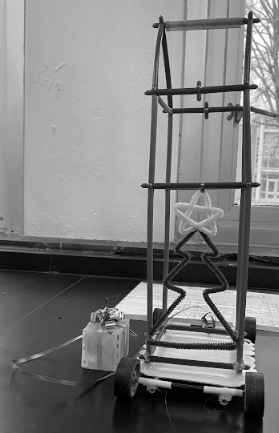Saving lives before they’re born
November 20, 2019
In February, a team of surgeons led by Darrell Cass, M.D. who is the director of fetal surgery at the Cleveland Clinic performed their first in utero fetal surgery. During the surgery they repaired a spina bifida birth defect in a 22.5 week old fetus.
According to the Better Health Channel, spina bifida usually affects lower leg strength and the ability to walk or run. It’s usually found in fetuses around 18 weeks old. This condition affects the lower spine and affects children when the neural tube can’t or doesn’t fully close which causes the bone that typically protects the spinal cord to form abnormally.
According to the March of Dimes, this abnormal growth causes damage and harm to the spinal cord and nerves, it can sometimes lead to brain damage. Approximately 1,645 babies are born with spina bifida each year according to the CDC.
The surgery works when an incision is made so that the mother’s uterus is exposed. After an ultrasound is used to locate the fetus, the uterus is then opened so that the fetus is exposed and showing the spina bifida lesion. Carefully, the surgeons suture several layers of tissue to cover the defect.
After the surgery, the uterus is closed, and the fetus stays in the mother’s stomach for the rest of the time they need to grow. However, because of the surgery the mother is no longer able to give birth naturally and would be required to get a C section in order to deliver.
“By successfully repairing the defect before birth, we’re allowing this child to have the best possible outcome and significantly improve her quality of life,” Dr. Cass explains. “There are different measures of quality in determining success for fetal repairs and in this particular case, all metrics for maximum quality were achieved.”
Freshman Valorie Radel says “wow,” and that she “never thought surgery on someone who hasn’t even been born yet was possible.” Along with Radel, Senior Kyle Kresege was also very surprised, “science and technology these days never fails to amaze me,” he says “who would’ve thought the next big thing is saving people not before they die but before they’re even born.”
The restoration of normal brain structure was successful in the surgery, before, the Arnold-Chiari malformation caused fluid back up and built up pressure that could ultimately cause brain damage. Usually shunts would be needed to fix this problem. However, when the surgery repair was performed on the baby while still in utero, the brain returned to its natural state. This was one factor of success the team witnessed when the brain was normal and had no built up fluid or pressure.
Another success was witnessed when the baby was born 36.5 weeks after gestation. This means the baby stayed in long enough to have time to grow and develop. The baby girl was delivered by C section on June 3, setting records in the books of fetal surgery. Both mother and daughter are alive and doing well.












